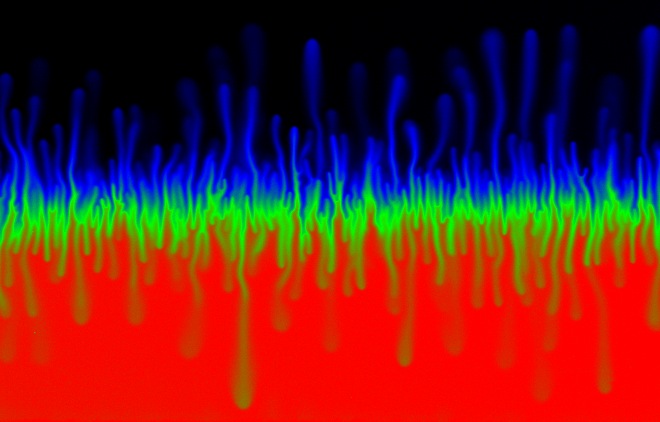Multi-component convection in a Hele-Shaw cell was imaged with the transmitted light imaging system. This image shows the gravity stabilized case of a lighter solution overlying a denser solution. Fingers develop because the solute in the top fluid has a smaller diffusion coefficient than the solute in the bottom fluid. In these examples the solutes are sugar and salt (NaCl).
Further Discussion

Pringle, S.E., and R.J. Glass, Double-diffusive finger convection in a solute system at fixed buoyancy ratio: Structural intricacy and length scale growth in Rayleigh space, Journal of Fluid Mechanics, 462, 161-183, 2002. (Also SAND2001-1883J) Photos are B&W
Pringle, S.E., R.J. Glass, and C.C. Cooper, Double-diffusive finger convection in a Hele-Shaw Cell: An experiment exploring the evolution of concentration fields, length scales, and mass transfer, Transport in Porous Media, 47:2:195-214, 2002.
Cooper, C.C., R.J. Glass and S.W. Tyler, Effect of bouyancy ratio on the development of double-diffusive finger convection in a Hele-Shaw Cell, Water Resources Research, 37:9:2323-2332, 2001.